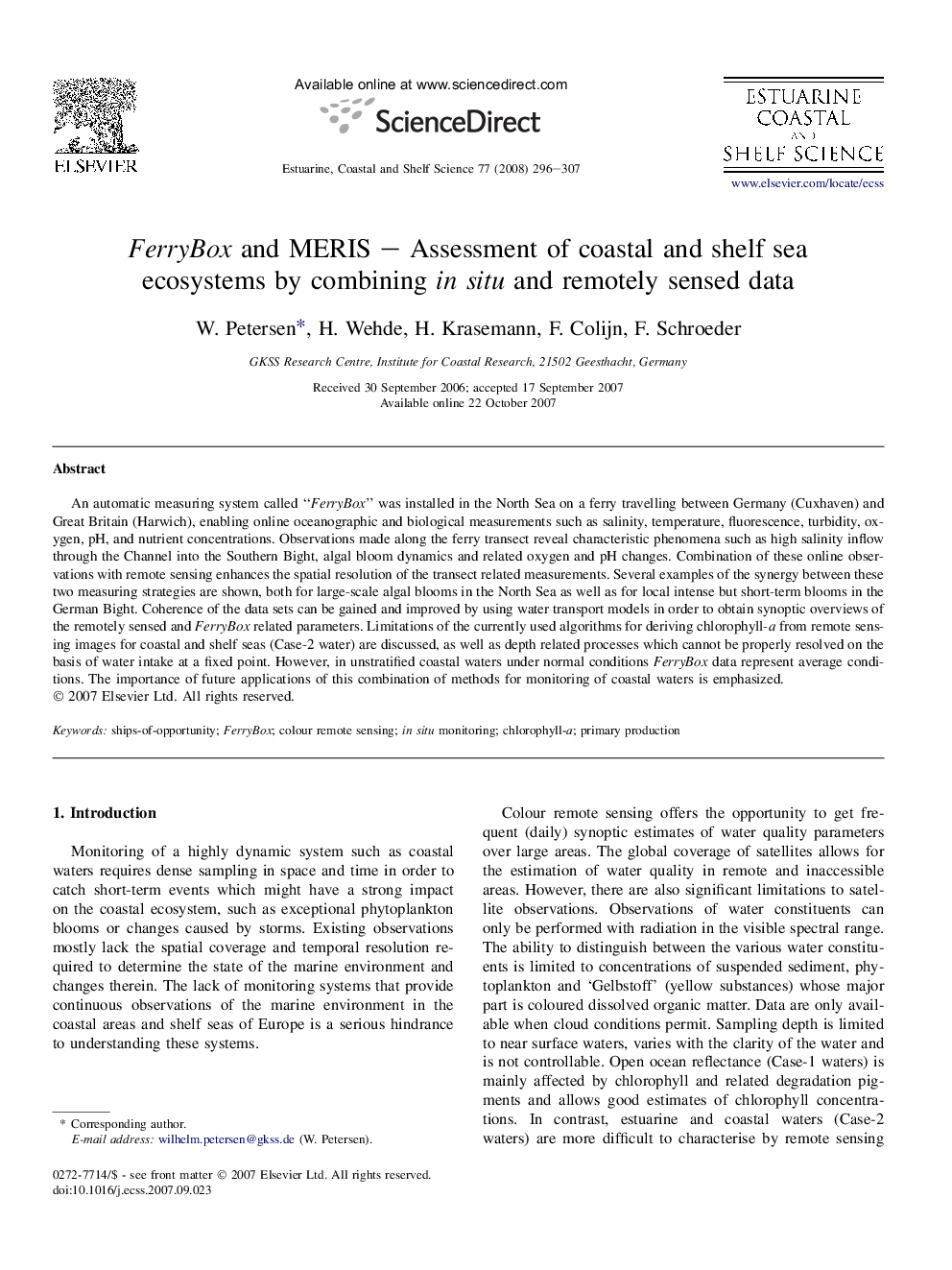| Article ID | Journal | Published Year | Pages | File Type |
|---|---|---|---|---|
| 4542035 | Estuarine, Coastal and Shelf Science | 2008 | 12 Pages |
An automatic measuring system called “FerryBox” was installed in the North Sea on a ferry travelling between Germany (Cuxhaven) and Great Britain (Harwich), enabling online oceanographic and biological measurements such as salinity, temperature, fluorescence, turbidity, oxygen, pH, and nutrient concentrations. Observations made along the ferry transect reveal characteristic phenomena such as high salinity inflow through the Channel into the Southern Bight, algal bloom dynamics and related oxygen and pH changes. Combination of these online observations with remote sensing enhances the spatial resolution of the transect related measurements. Several examples of the synergy between these two measuring strategies are shown, both for large-scale algal blooms in the North Sea as well as for local intense but short-term blooms in the German Bight. Coherence of the data sets can be gained and improved by using water transport models in order to obtain synoptic overviews of the remotely sensed and FerryBox related parameters. Limitations of the currently used algorithms for deriving chlorophyll-a from remote sensing images for coastal and shelf seas (Case-2 water) are discussed, as well as depth related processes which cannot be properly resolved on the basis of water intake at a fixed point. However, in unstratified coastal waters under normal conditions FerryBox data represent average conditions. The importance of future applications of this combination of methods for monitoring of coastal waters is emphasized.
